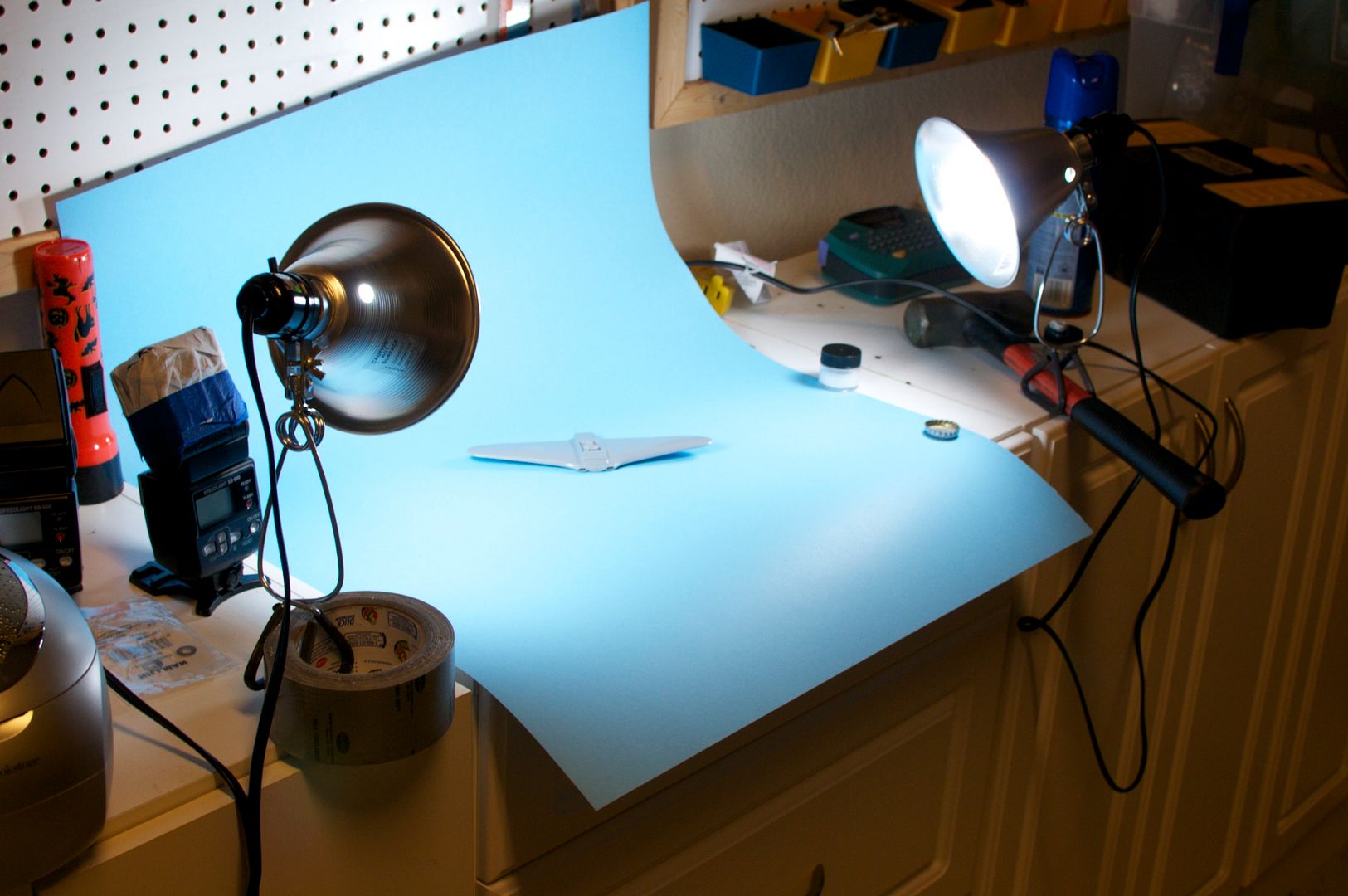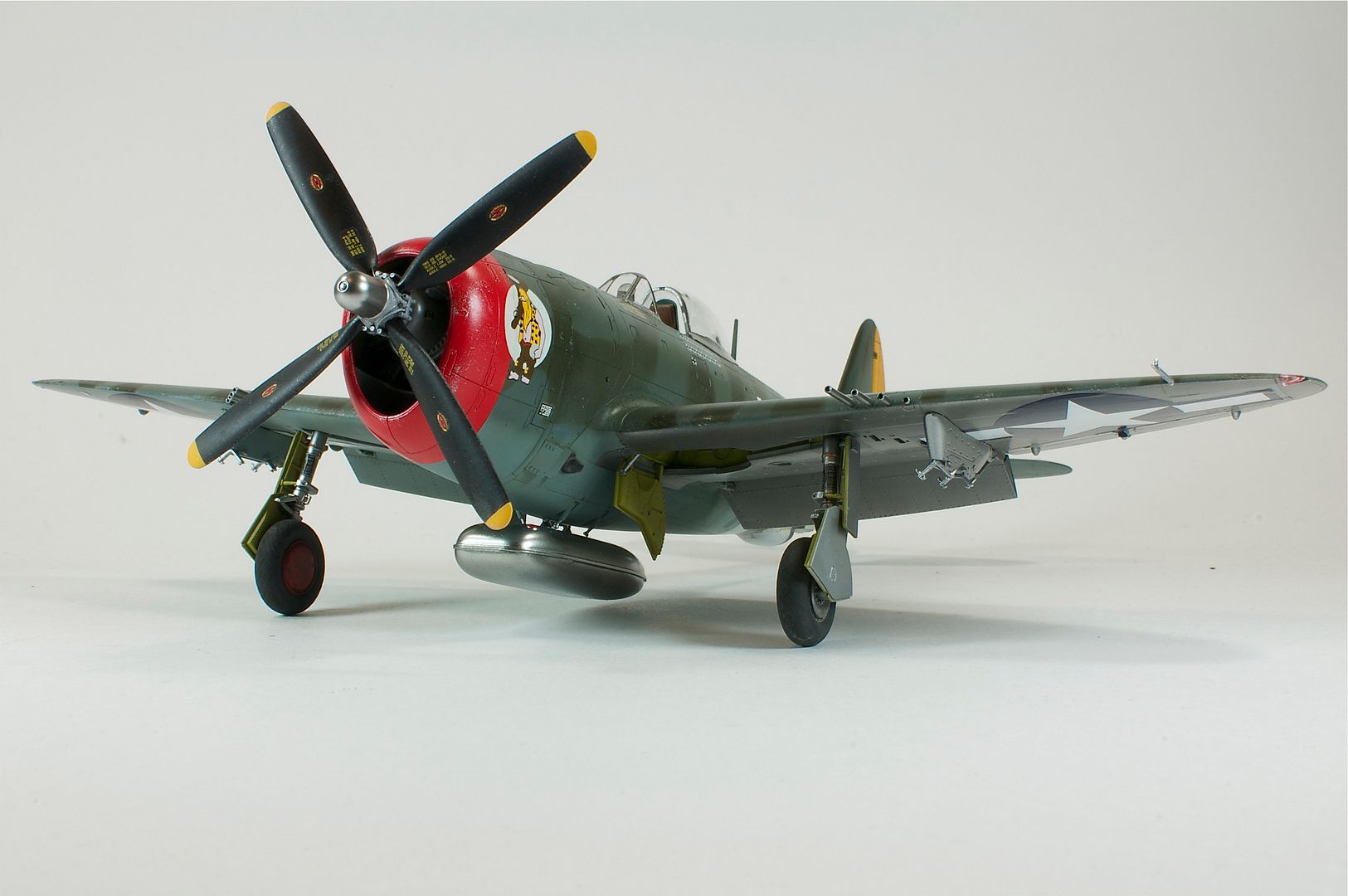I wrote the following in another post a few days ago. Might help...
-------------------------------------------
From most important to nice-to-have:
1 - Tripod. Having a stable shooting platform reduces chances for blur and keeps the camera steady for better pictures in lower light.
2 - No flash. Unless you're shooting with a DSLR and off-camera flashes, the flash will just overpower, creating harsh shadows and blowing out and/or washing out the kit. Instead, invest in some lighting. This can be as simple as some of those clamp-on work lights you can get at any hardware store:

3 - Backdrop. A sheet, paper, card stock, whatever, but a solid background isolates the model. I've seen some really great shots where people use real-world backdrops to represent a natural background to great effect. Sadly, I'm not one of those who has a big open field just outside my door, and WWII-era props would look silly in a modern suburban neighborhood.
4 - Settings. Turn the flash off. If you have manual controls, set the aperture to the highest f-stop you can (I usually use f/22). If you can shoot in RAW and have an image editor that supports it, do that. It'll let you do color correction fixes on the computer. Consider using the timer set to a short delay ( I use 2 seconds) so you don't jostle the camera when you press the shutter. Also, make sure you're far enough away to actually focus on the model. You'd be surprised how many cameras have a minimum focus distance of 18-24".
Beyond that, there's a lot of room to experiment and find what works best for you. IMO off-camera lighting is the single biggest difference-maker.
